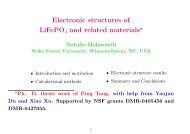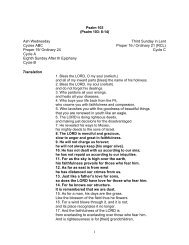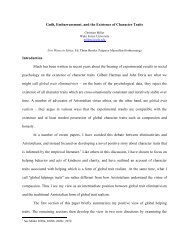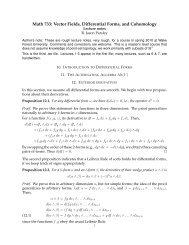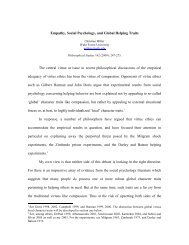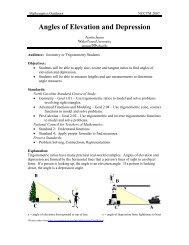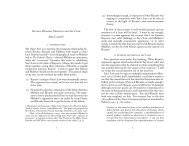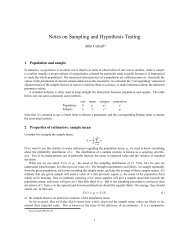Nonnegativity Constraints in Numerical Analysis - CiteSeer
Nonnegativity Constraints in Numerical Analysis - CiteSeer
Nonnegativity Constraints in Numerical Analysis - CiteSeer
You also want an ePaper? Increase the reach of your titles
YUMPU automatically turns print PDFs into web optimized ePapers that Google loves.
4.1 Nonnegative Matrix FactorizationIn Nonnegative Matrix Factorization (NMF), an m × n (nonnegative) mixed data matrix Xis approximately factored <strong>in</strong>to a product of two nonnegative rank-k matrices, with k smallcompared to m and n, X ≈ WH. This factorization has the advantage that W and H canprovide a physically realizable representation of the mixed data. NMF is widely used <strong>in</strong> avariety of applications, <strong>in</strong>clud<strong>in</strong>g air emission control, image and spectral data process<strong>in</strong>g,text m<strong>in</strong><strong>in</strong>g, chemometric analysis, neural learn<strong>in</strong>g processes, sound recognition, remotesens<strong>in</strong>g, and object characterization, see, e.g. [9].NMF problem: Given a nonnegative matrix X ∈ R m×n and a positive <strong>in</strong>teger k ≤m<strong>in</strong>{m, n}, f<strong>in</strong>d nonnegative matrices W ∈ R m×k and H ∈ R k×n to m<strong>in</strong>imize the functionf(W, H) = 1‖X − 2 WH‖2 F , i.e.k∑m<strong>in</strong> f(H) = ‖X − W (i) ◦ H (i) ‖ subject to W, H ≥ 0 (15)Hi=1where ′ ◦ ′ denotes outer product, W (i) is ith column of W, H (i) is ith column of H TFigure 1: An illustration of nonnegative matrix factorization.See Figure 1 which provides an illustration of matrix approximation by a sum of rankone matrices determ<strong>in</strong>ed by W and H. The sum is truncated after k terms.Quite a few numerical algorithms have been developed for solv<strong>in</strong>g the NMF. The methodologiesadapted are follow<strong>in</strong>g more or less the pr<strong>in</strong>ciples of alternat<strong>in</strong>g direction iterations,the projected Newton, the reduced quadratic approximation, and the descent search. Specificimplementations generally can be categorized <strong>in</strong>to alternat<strong>in</strong>g least squares algorithms[64], multiplicative update algorithms [40, 51, 52], gradient descent algorithms, and hybridalgorithms [67, 69]. Some general assessments of these methods can be found <strong>in</strong> [20, 56]. Itappears that there is much room for improvement of numerical methods. Although schemesand approaches are different, any numerical method is essentially centered around satisfy<strong>in</strong>gthe first order optimality conditions derived from the Kuhn-Tucker theory. Note that thecomputed factors W and H may only be local m<strong>in</strong>imizers of (15).14



